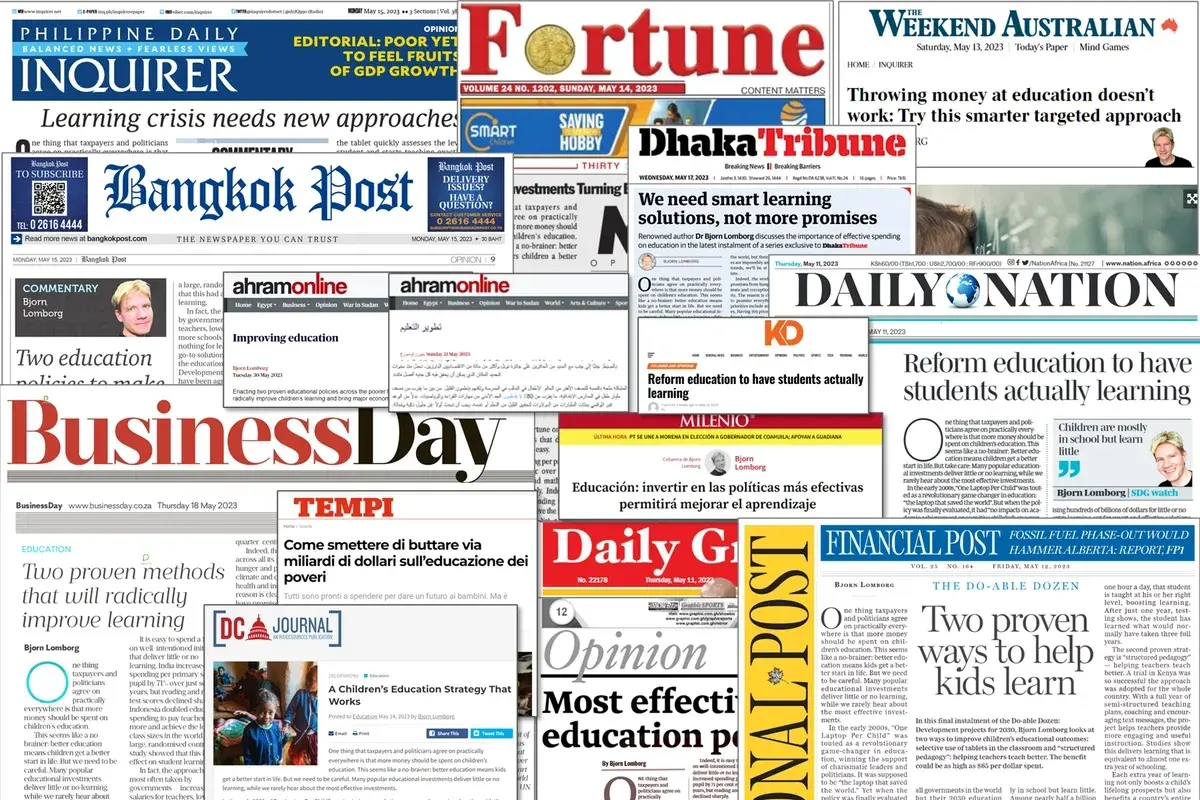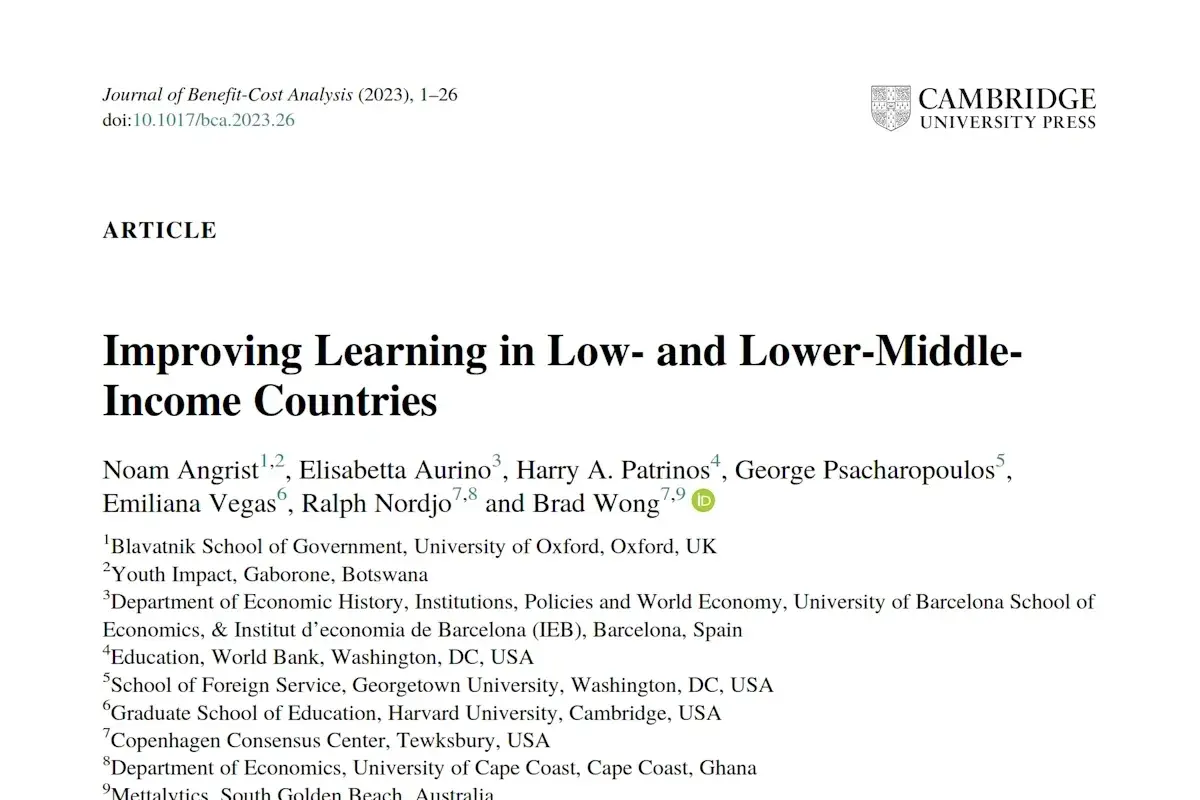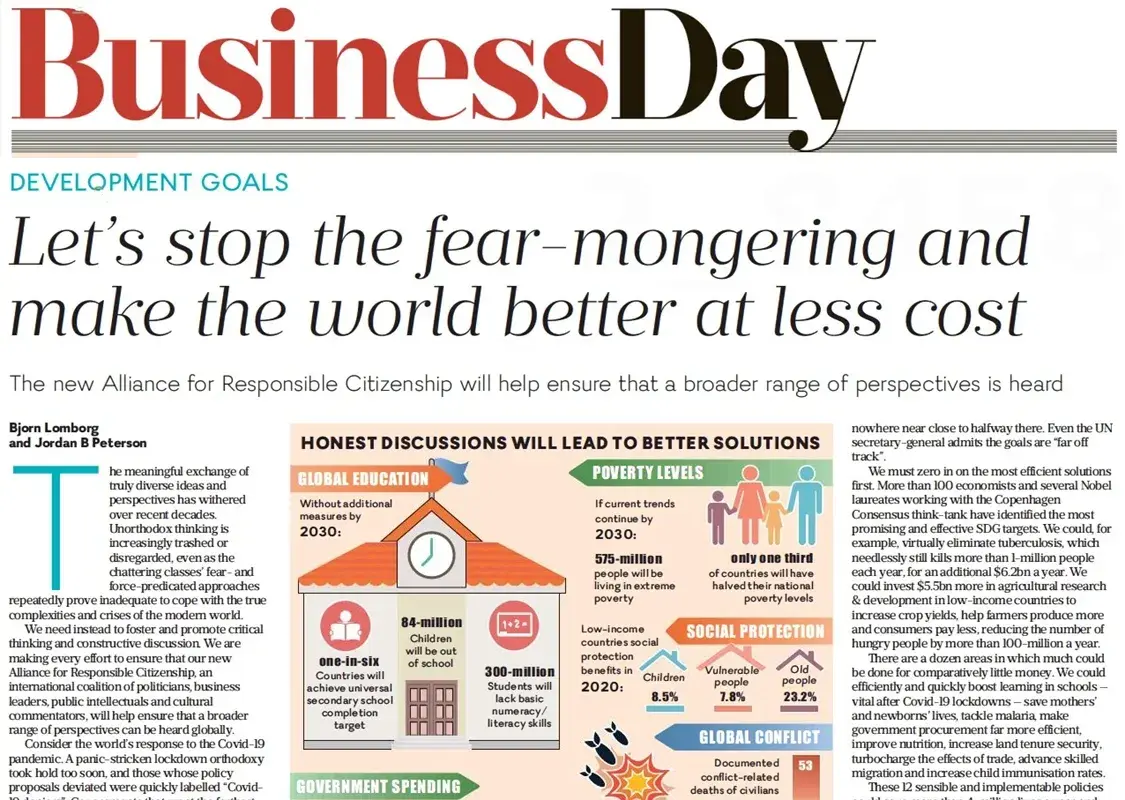Education
Three years of learning in an hour per day
One thing that taxpayers and politicians agree on practically everywhere is that more money should be spent on children’s education. This seems like a no-brainer: more money means kids get a better start in life. But we need to be careful. Many popular educational investments deliver little or no learning, while we rarely hear about the most effective investments.
In the early 2000s, “One Laptop Per Child” was touted as a revolutionary game-changer in education with the support of charismatic leaders and politicians: it was supposed to be “the laptop that saved the world.” Yet, when the policy was evaluated using the research gold-standard of a randomized controlled trial, there were “no impacts on academic achievement or cognitive skills” whatsoever.
It is easy to spend a fortune on well-intentioned initiatives that deliver little or no learning. India increased spending per primary school pupil by 71% over just 7 years, but reading and math test scores declined sharply. Indonesia doubled education spending to pay teachers more and achieve the lowest class sizes in the world, yet a large, randomized controlled study showed that this had absolutely no impact on student learning.
In fact, the approaches taken most often by governments—increasing salaries for teachers, lowering class sizes and building more schools—are costly and do little or nothing for learning. Yet, they are often the go-to solutions for international pledges like the education promises in the Sustainable Development Goals. These were agreed on in 2015 by all the world’s leaders, and the world is supposed to achieve the goals by 2030. Based on current trends, even if we ignore the setbacks of COVID-19, we will only reach the education targets in 2056, more than a quarter century late.
Globally, we are failing not only at delivering on our education SDGs but also on all the SDG promises across the board. That’s why my think tank, the Copenhagen Consensus, is working with some of the world’s best economists to identify which SDG promises can be prioritized to achieve the most good with the lowest investment. If we can’t do everything, we should focus on the smartest solutions in every area—including education.
Within education, we do not fulfill our promises because we don’t focus on the most effective solutions. Take for instance the international Education Commission. It advocates a do-everything approach to achieving the education SDGs. This would cost almost $2 trillion more every year—much of it going on ineffective policies. Just accelerating teacher salaries, lowering class sizes, and building more classrooms for primary schools would cost $116 per pupil in low-income countries and $246 in lower middle-income countries. For the poorest half of the world, this adds up to a price-tag of almost $100 billion every year—on policies that have been shown to have few or no learning benefits.
We need to prioritize where to spend scarce resources first. In the world’s poorest half, eight in ten children fail to achieve basic, minimum levels of reading comprehension or math skills. In these countries, there are 650 million children in school, but an astonishing 80%—or half a billion children—are not learning minimal skills. Our research shows that two affordable policies can make an amazing difference.
The first initiative helps pupils to learn more effectively. Almost universally, schools put kids into grade levels with children of the same age. Studies show that especially in schools in poorer countries, many children are either far behind and ready to give up, or far ahead and bored.
Large-scale tests in India and elsewhere highlight the effectiveness of “teaching at the right level” where students are taken out of these classes for one hour a day and grouped by learning level instead of age. During this time, children are exposed to teaching tailored to their needs. Amazingly, just one hour a day can make the full school year deliver learning that normally would have taken three years.
The second proven strategy is “structured pedagogy” that focuses on helping teachers teach better. A trial in Kenya was so successful that the approach was adopted for the whole country. This project provided a consistent and effective method for teaching reading that could easily be replicated by many teachers, with lesson plans, workshops, and weekly text messages. The annual cost for one student is around $7.50, and it has been shown to deliver learning that is equivalent to almost one extra year of schooling. The student doubles learning without spending an extra year in the classroom.
Each extra year of learning we can provide not only boosts a child’s lifelong prospects but also brightens a country’s entire prospects. Enacting these two policies across the poor half of the world would cost just $8 billion annually and deliver almost half a trillion in annual benefits from higher long-term productivity. Every dollar delivers an outstanding $54 dollars of social benefits. This is a much better prospect than spending almost $100 billion every year for initiatives that have been shown not improve learning.
Improving the futures of children is indeed a no-brainer—spending scarce resources on failed educational policies is a huge waste. Instead, we should first spend $8 billion on proven, effective approaches and deliver on the most important education pledge of all: radically improved learning.







